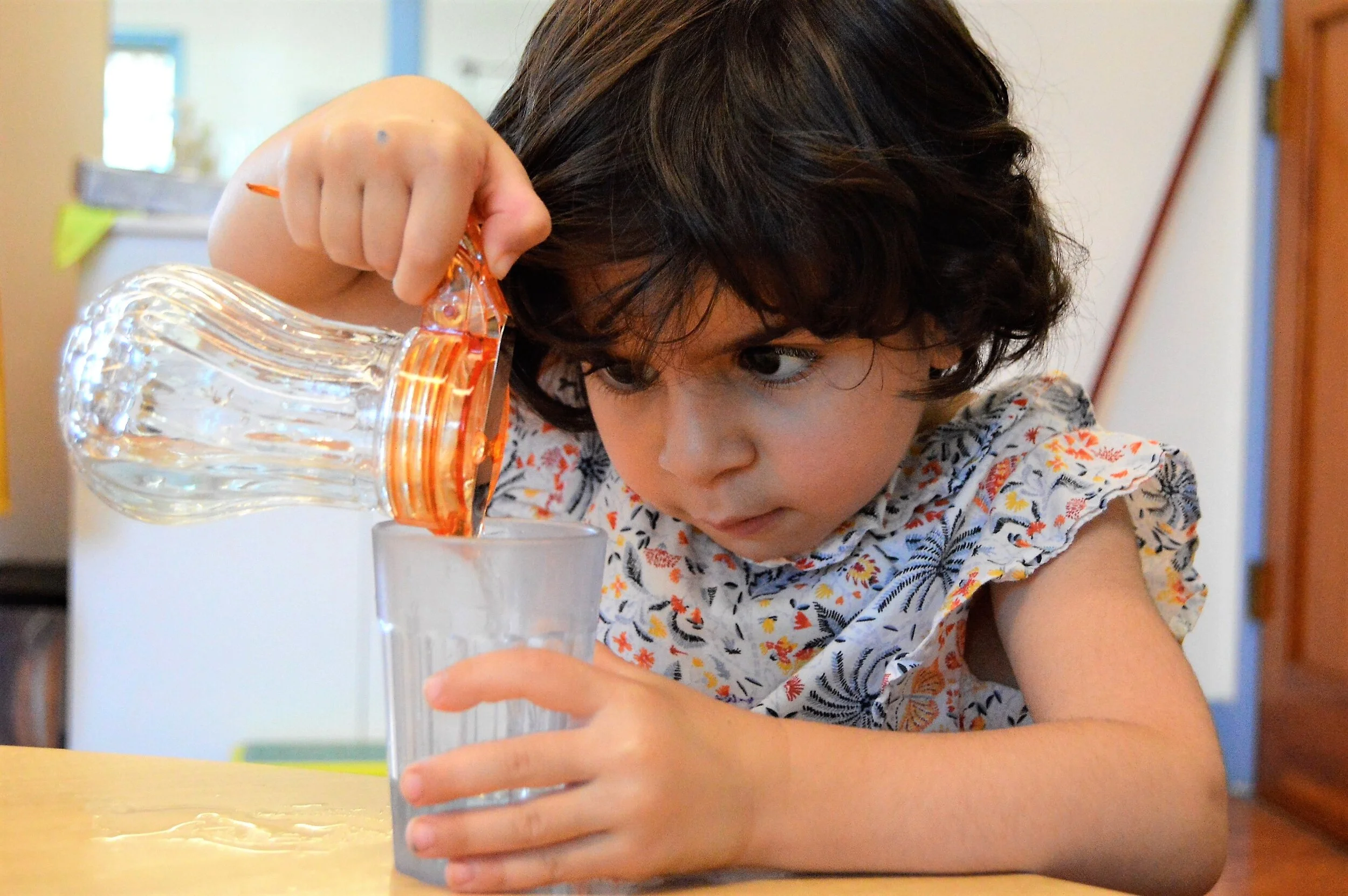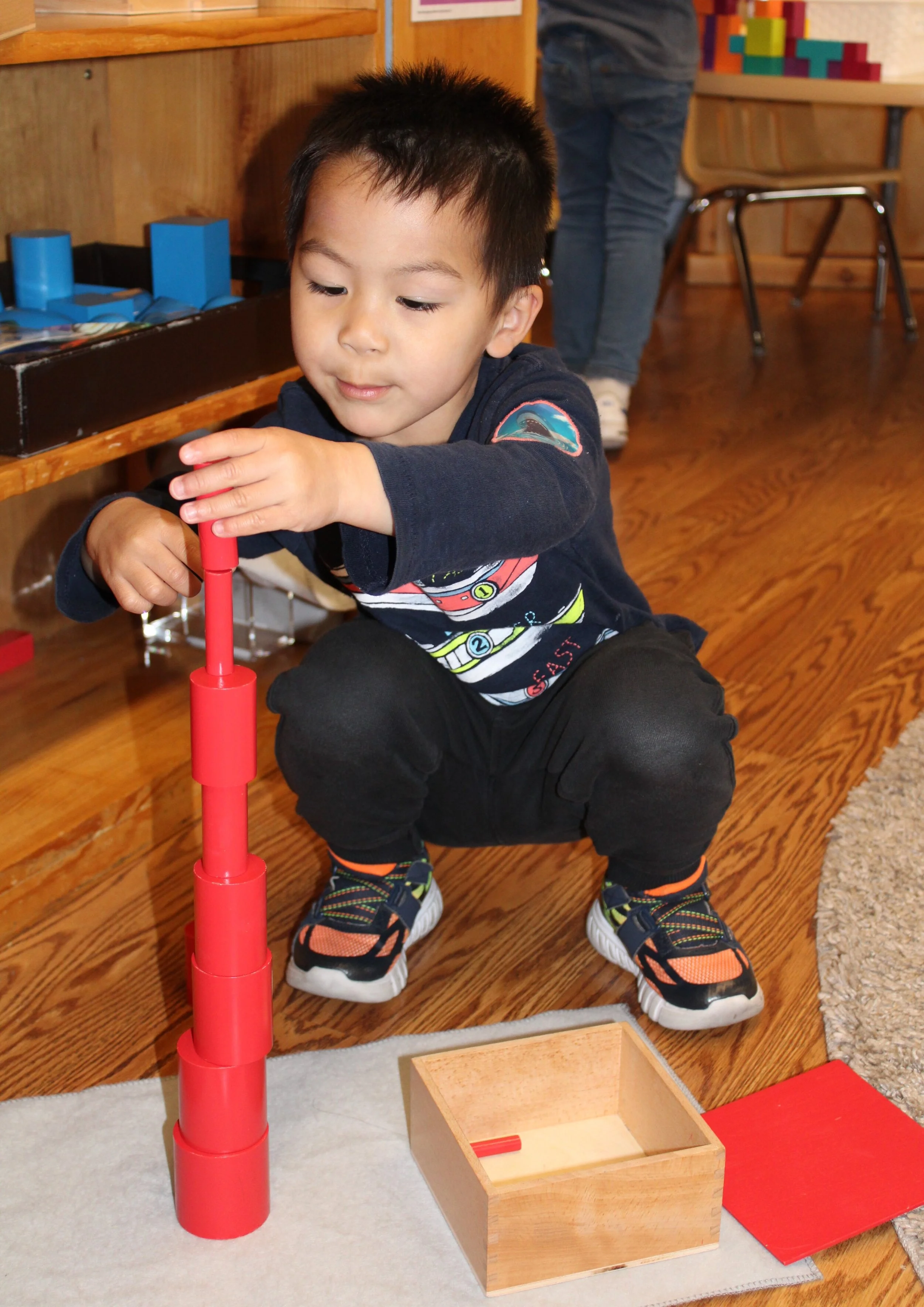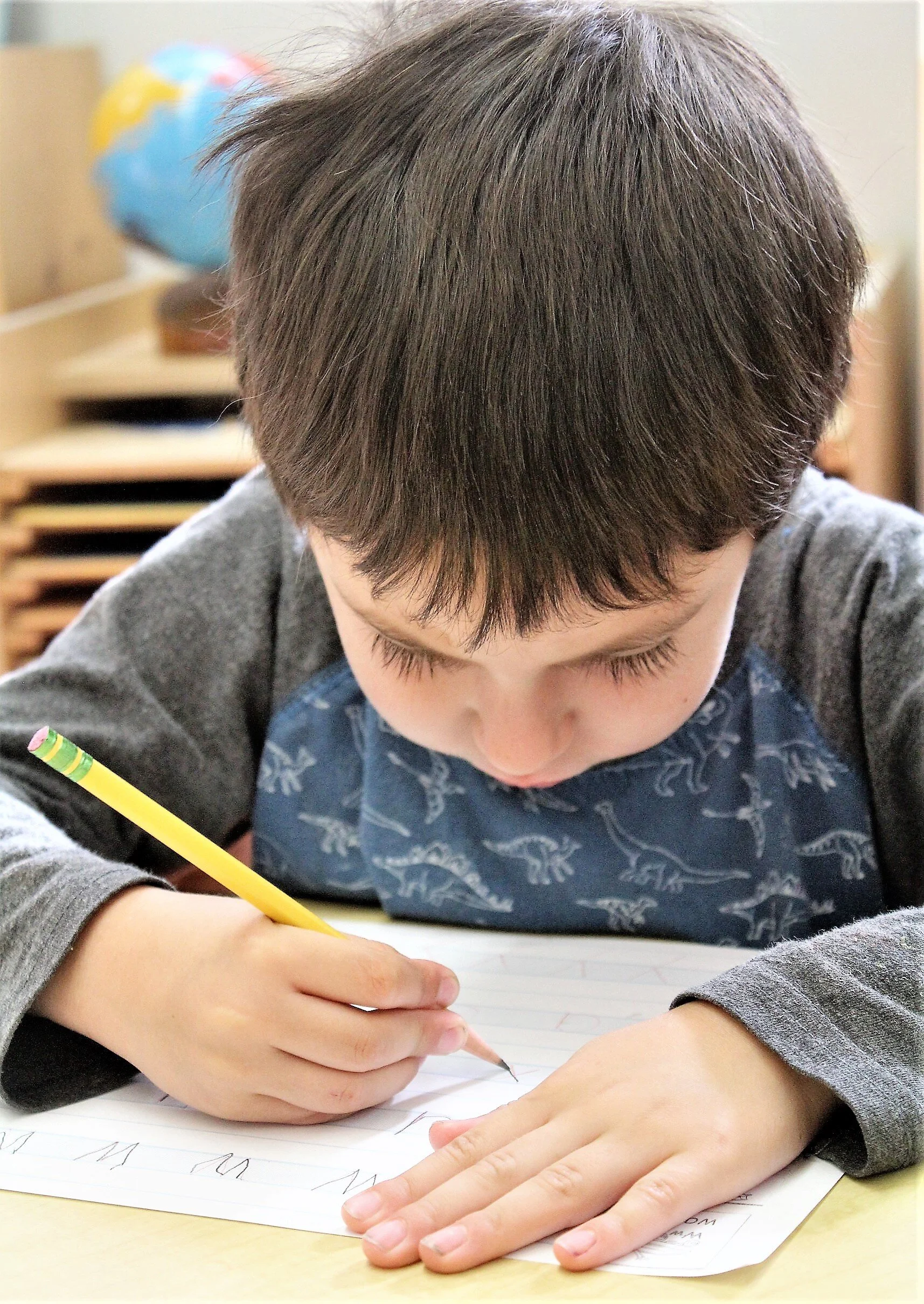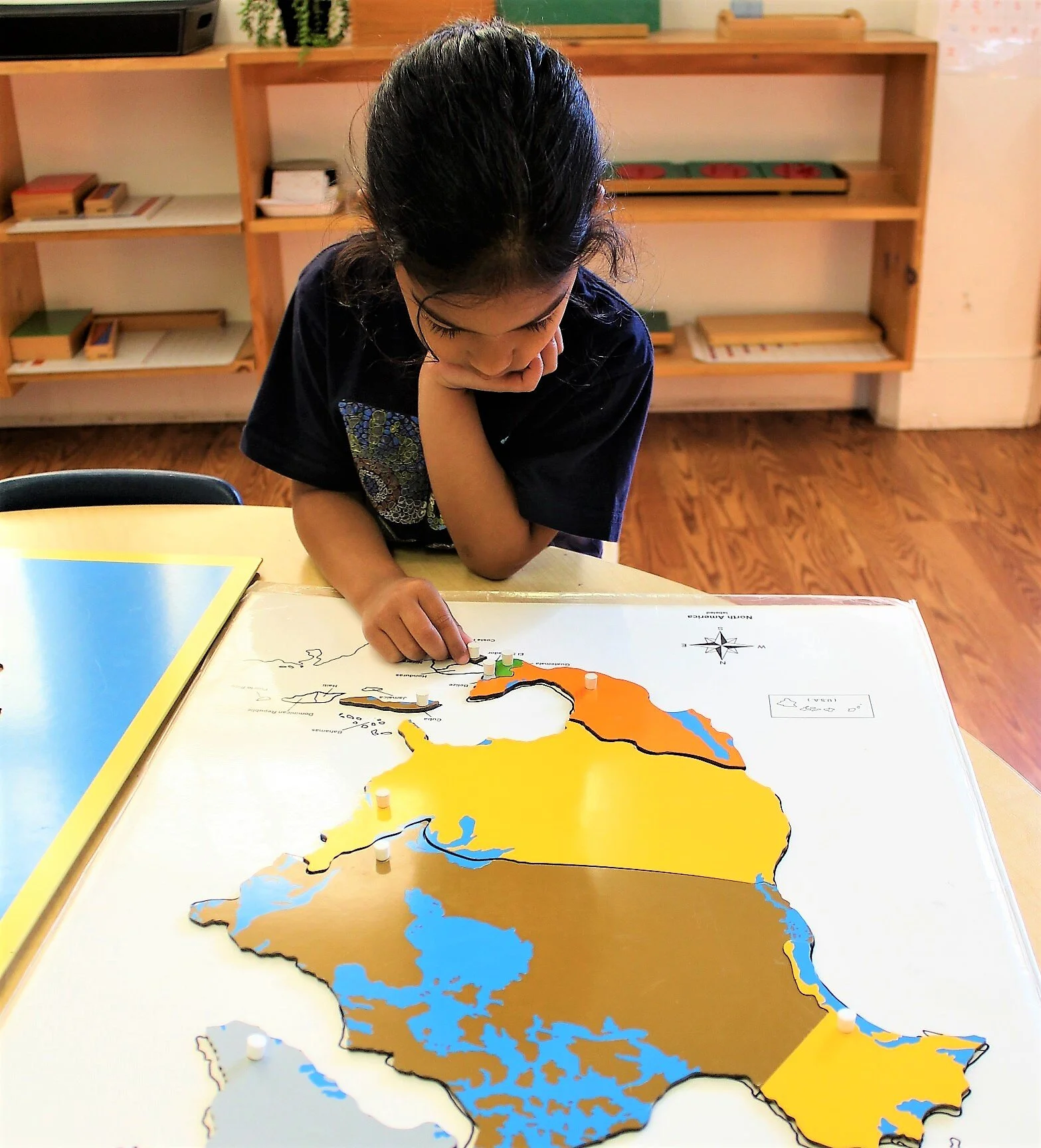
Curriculum
The Montessori Curriculum is an integrated thematic approach that ties together separate disciplines into studies of the physical universe, the world of nature, and the human experience. In this way, one lesson leads to many others.
Learning materials in the classroom have been specially designed, by isolating one concept or skill, to naturally draw children to explore and work with them. Each material has also been designed so a child can check his own work—what Montessori calls “control of error.”
These learning experiences lead to independence, and the materials let children see abstract ideas presented in concrete, three-dimensional ways. They also help them grasp and understand what they are working on, and allow each child to work at their own pace.
The curriculum is divided into four areas: Practical Life, Sensorial, Language, and Cultural subjects. The curriculum is always evolving and growing alongside the children.
The Montessori curriculum is divided into four areas
Practical Life
The Practical Life area gives children a chance to gain independence by learning to control the coordination of their large and small motor movements. Practical Life also helps children to adapt to their society by teaching them to move gracefully and to be courteous.
Sensorial
The Sensorial area allows children to acquire information by using their senses. The activities give them a chance to refine all five senses—smell, touch, hearing, sight, and taste. In addition, children learn to classify objects in their environment and learn the language that goes with this activity, such as short / tall, narrow / wide, small / big, etc. The Sensorial area also prepares children for mathematics.
Language
The Language area consists of materials used for reading, writing, and math. Montessori reading and writing materials are specially designed to teach not only reading and writing, but also comprehension of what the child reads.
The math materials introduce abstract concepts, and give a sequential understanding through hands-on concrete exercises that allow a child to understand mathematical concepts. This provides the child the opportunity to become comfortable and competent in the language of numbers.
Cultural Subjects
The Cultural area gives children a chance to explore geography, general science, botany, zoology, music, and art. Dr. Montessori felt that knowing and understanding these subjects was what made a person “cultured.” The Cultural area is unique to the Montessori curriculum; it distinguishes Montessori schools from all other preschools. The Cultural area also prepares children for reading.
Beautiful Outdoor Space
Big City has a beautiful, large outdoor space divided into three areas. Each one offers the child a different experience while playing outside. The padded grass area has a play structure and climbing wall designed for children 2.5-6 years old. The large rubber area offers the children a place to run, dance and play games with their peers. The large covered deck area provides shelter from the sun and rain - designed for dramatic play, individual play, and group play. During the rainy months we can roll down the curtains and bring out activities for energetic fun.





